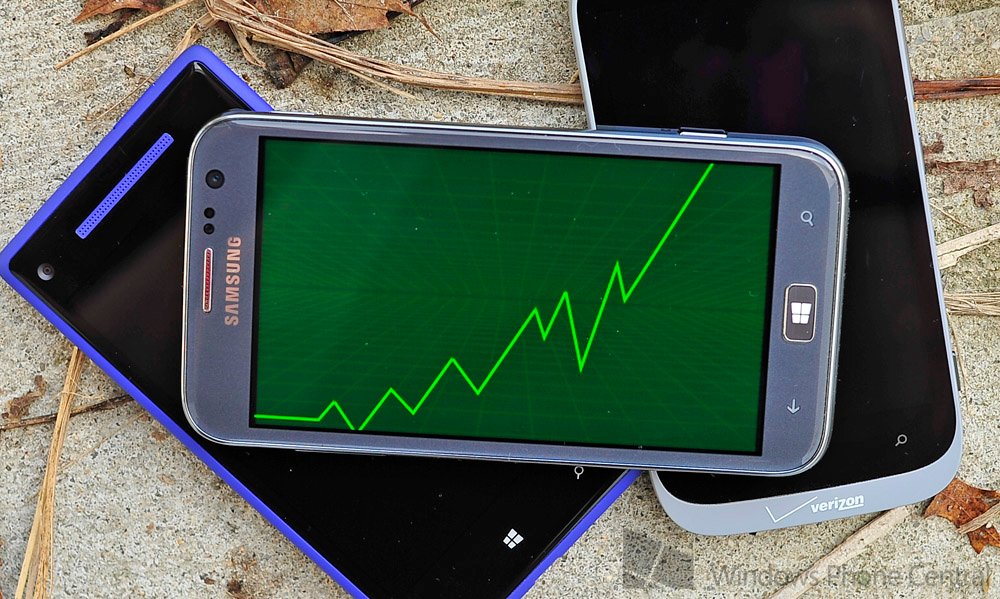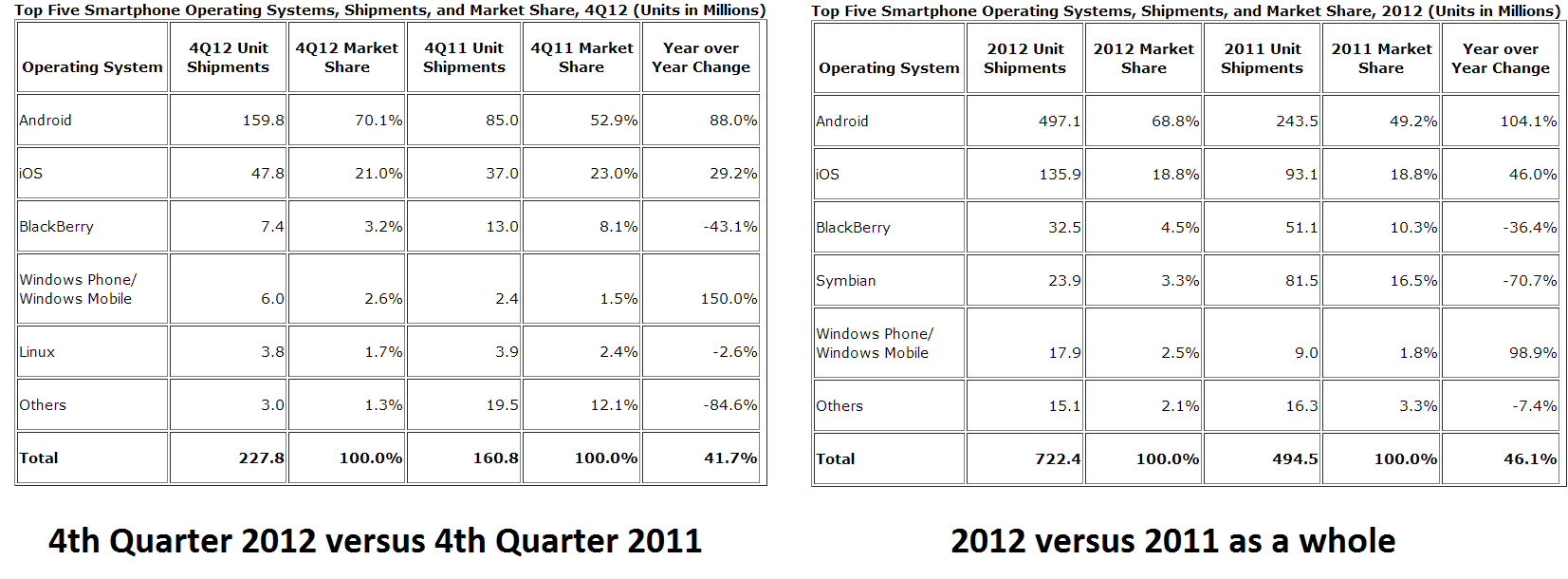IDC reports a 150% YoY change for Windows Phone but is it enough?

The International Data Corporation (IDC) has posted its Q4 2012 global results of smartphone trends and it nicely reflects yesterday’s report from Gartner. The data is both a mix of good news and bad news for Windows Phone, showing that year-over-year (YoY) growth has increased by 150% going from 1.5% market share to 2.6% in late 2012. That’s certainly a positive sign but in the context of the rest of the smartphone race, it’s still a drop in the bucket.
Android and iOS accounted for a massive 91.1% of all smartphone sales, which is quite astonishing. BlackBerry, while still ahead of Windows Phone (3.2% versus 2.6% for Q4) took a drastic drop from last year when it had a more comfortable 8.1% market share. That’s a -43% fall for the Waterloo company, which of course can be ascribed to holding on to BlackBerry 7 for so long.
Now that BlackBerry 10 is out and shipping, it will be very interesting to see if they can recapture those customers. One thing that is evident, it’s hard to change momentum in one or two quarters, so BlackBerry has its work cut out for them.

Microsoft’s 150% increase is positive news. However at just 2.6% market share for the quarter, it still pales compared to Android (70.1%) and iOS (21%). After all, going from 1 to 2 is a 100% increase but it doesn’t change the fact that 2 is not a high number—it’s all relative.
Having said that we are talking about momentum here and it seems evident that between IDC’s numbers (150% YoY) and Gartner’s (124% YoY) that Windows Phone not only has it, it’s ahead of Android in terms of rate of growth. That’s very good.
Putting aside quarterly results, the yearly report shows that Windows Phone is still only at 2.5% (up from 1.8) and BlackBerry still has a more comfortable lead at 4.5% (down from 10% in 2011). What this shows is Windows Phone had positive growth for most of 2012 but it was the fourth quarter, when Windows Phone 8 was introduced, that things started to really pick up steam.
But will that maintain? That’s the million dollar question. If this was just one good quarter for Microsoft and their market share drops (or even worse, BlackBerry 10 takes off), this could be just a temporary victory. For now though, we’ll take solace that Windows Phone is on the right path. In other words, we’re cautiously optimistic.
Get the Windows Central Newsletter
All the latest news, reviews, and guides for Windows and Xbox diehards.
Another interesting observation is that Nokia evidently accounted for 76% of all Windows Phone shipments in Q4. That’s fascinating if only because the Lumia 920, their flagship phone, not only suffers from limited carrier availability but limited stock as well.
Despite that fact, by releasing the Lumia 505, 510, 810, 820, 822 and 920, Nokia has shown that their strategy is effective. Those figures don’t even take into account the popular and low-cost Lumia 620, a phone that is expected to boost their impetus in Q1 2013.
Source: IDC

Daniel Rubino is the Editor-in-chief of Windows Central. He is also the head reviewer, podcast co-host, and analyst. He has been covering Microsoft since 2007 when this site was called WMExperts (and later Windows Phone Central). His interests include Windows, laptops, next-gen computing, and wearable tech. He has reviewed laptops for over 10 years and is particularly fond of 2-in-1 convertibles, Arm64 processors, new form factors, and thin-and-light PCs. Before all this tech stuff, he worked on a Ph.D. in linguistics, performed polysomnographs in NYC, and was a motion-picture operator for 17 years.
